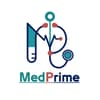L9 QS BANK, BMS204 PDF - Pharmacology Past Paper Questions
Document Details

Uploaded by MedPrime
New Mansoura University
Tags
Summary
This document contains a set of multiple-choice questions (MCQs) focusing on antiarrhythmic drugs and related concepts in pharmacology. The questions cover the selection and use of drugs for various cardiovascular conditions, along with possible side effects and contraindications. The document is likely part of a larger learning resource for undergraduate-level medical students or professionals studying pharmacology.
Full Transcript
Part One: Simple MCQs 1. Which of the following is the pacemaker of the heart? a) Atrioventricular node (AV node) b) Sinoatrial node (SA node) c) Purkinje fibers d) Right atrium 2. In which phase of the action potential does rapid potassium efflux occur? a) Phase 0 b) Phase 1 c) Phase 2 d) Ph...
Part One: Simple MCQs 1. Which of the following is the pacemaker of the heart? a) Atrioventricular node (AV node) b) Sinoatrial node (SA node) c) Purkinje fibers d) Right atrium 2. In which phase of the action potential does rapid potassium efflux occur? a) Phase 0 b) Phase 1 c) Phase 2 d) Phase 3 3. Which of the following is a non-pharmacological therapy for arrhythmia? a) Adenosine b) Quinidine c) Amiodarone d) Ablation technique 4. Which class of antiarrhythmic drugs blocks sodium channels? a) Class I b) Class II c) Class III d) Class IV 5. Which of the following is a side effect of quinidine? a) Cinchonism b) Bradycardia c) Hypothyroidism d) Pulmonary infiltrations 6. Which class of antiarrhythmic drugs does lidocaine belong to? a) Class IA b) Class IB c) Class IC d) Class II 7. Which of the following is a contraindication for amiodarone? a) Hypertension b) Diabetes c) Thyroid dysfunction d) Renal failure 8. Which class of antiarrhythmic drugs does verapamil belong to? a) Class I b) Class II c) Class III d) Class IV 9. Which of the following is the drug of choice for acute supraventricular tachycardia? a) Adenosine b) Lidocaine c) Amiodarone d) Verapamil 10. Which of the following is a side effect of adenosine? a) Cinchonism b) Bradycardia c) Hypothyroidism d) Bronchospasm Part Two: Complex MCQs 1. A patient with a history of bronchial asthma presents with supraventricular tachycardia. Which of the following antiarrhythmic drugs should be avoided? a) Adenosine b) Lidocaine c) Amiodarone d) Verapamil 2. A patient with a history of hypothyroidism is diagnosed with atrial fibrillation. Which of the following antiarrhythmic drugs should be used with caution? a) Quinidine b) Lidocaine c) Amiodarone d) Verapamil 3. A patient with a history of heart block is diagnosed with ventricular tachycardia. Which of the following antiarrhythmic drugs should be avoided? a) Quinidine b) Lidocaine c) Amiodarone d) Adenosine 4. A patient with a history of pulmonary fibrosis is diagnosed with atrial flutter. Which of the following antiarrhythmic drugs should be avoided? a) Quinidine b) Lidocaine c) Amiodarone d) Verapamil 5. A patient with a history of torsades de pointes is diagnosed with supraventricular tachycardia. Which of the following antiarrhythmic drugs should be avoided? a) Quinidine b) Lidocaine c) Sotalol d) Verapamil 6. A patient with a history of systemic lupus erythematosus (SLE) is diagnosed with ventricular fibrillation. Which of the following antiarrhythmic drugs should be avoided? a) Quinidine b) Procainamide c) Lidocaine d) Amiodarone 7. A patient with a history of myopathy is diagnosed with atrial fibrillation. Which of the following antiarrhythmic drugs should be used with caution? a) Quinidine b) Lidocaine c) Amiodarone d) Verapamil 8. A patient with a history of hepatic dysfunction is diagnosed with ventricular tachycardia. Which of the following antiarrhythmic drugs should be used with caution? a) Quinidine b) Lidocaine c) Amiodarone d) Verapamil 9. A patient with a history of gingival hyperplasia is diagnosed with supraventricular tachycardia. Which of the following antiarrhythmic drugs is most likely to have caused this side effect? a) Quinidine b) Phenytoin c) Lidocaine d) Amiodarone 10. A patient with a history of photosensitivity is diagnosed with atrial fibrillation. Which of the following antiarrhythmic drugs is most likely to exacerbate this condition? a) Quinidine b) Lidocaine c) Amiodarone d) Verapamil 11. Which antiarrhythmic drug is known to cause QT prolongation and potentially lead to torsades de pointes? a) Lidocaine b) Quinidine c) Verapamil d) Adenosine 12. Which antiarrhythmic drug is only administered intravenously due to its high first-pass metabolism? a) Lidocaine b) Quinidine c) Amiodarone d) Verapamil 13. Which antiarrhythmic drug is also effective in treating epilepsy? a) Lidocaine b) Quinidine c) Phenytoin d) Verapamil 14. Which antiarrhythmic drug acts primarily by opening potassium channels and causing hyperpolarization? a) Lidocaine b) Quinidine c) Verapamil d) Adenosine 15. Which antiarrhythmic drug is a beta-blocker with additional potassium channel blocking effects? a) Propranolol b) Sotalol c) Esmolol d) Atenolol 16. Which antiarrhythmic drug is a structural analog of amiodarone but lacks iodine and therefore has no thyroid or pulmonary toxicity? a) Dronedarone b) Dofetilide c) Procainamide d) Quinidine 17. Which antiarrhythmic drug is a potent pure potassium blocker and can be used in patients with atrial fibrillation even with heart failure? a) Dronedarone b) Dofetilide c) Procainamide d) Quinidine 18. Which antiarrhythmic drug is contraindicated in patients with moderate to severe heart failure and heart block? a) Lidocaine b) Quinidine c) Amiodarone d) Verapamil 19. Which antiarrhythmic drug can cause a paradoxical tachycardia if used without prior digitalization? a) Lidocaine b) Quinidine c) Amiodarone d) Verapamil 20. Which antiarrhythmic drug is known to cause cinchonism, characterized by symptoms like tinnitus, blurred vision, and headache? a) Lidocaine b) Quinidine c) Amiodarone d) Verapamil Answer Guide Part One 1. b 2. d 3. d 4. a 5. a 6. b 7. c 8. d 9. a 10. d Part Two 1. a 2. c 3. d 4. c 5. c 6. b 7. c 8. c 9. b 10. c 11. b 12. a 13. c 14. d 15. b 16. a 17. b 18. c 19. b 20. b Done